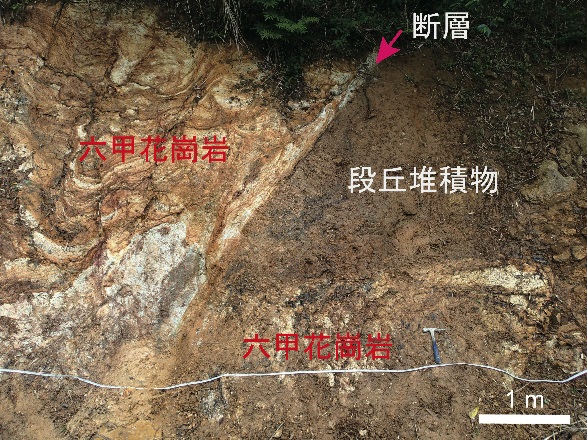Photo of study site showing displacement between a Quaternary terrace deposit and Cretaceous granite along the ATTL.
Presence of amorphous ultrafine particles shows fault activity within 1,000 years
The criteria for designating an “Active Fault” not only are important for understanding regional tectonics, but also are a paramount issue for assessing the earthquake risk of faults that are near important structures such as nuclear power plants. Here we propose a proxy, based on the preservation of amorphous ultrafine particles, to assess fault activity within the last millennium. X-ray diffraction data and electron microscope observations of samples from an active fault demonstrated the preservation of large amounts of amorphous ultrafine particles in two slip zones that last ruptured in 1596 and 1999, respectively. A chemical kinetic evaluation of the dissolution process indicated that such particles could survive for centuries, which is consistent with the observations. Thus, preservation of amorphous ultrafine particles in a fault may be valuable for assessing the fault’s latest activity, aiding efforts to evaluate faults that may damage critical facilities in tectonically active zones.

(Link) http://resou.osaka-u.ac.jp/en/research/2016/20161109_1











